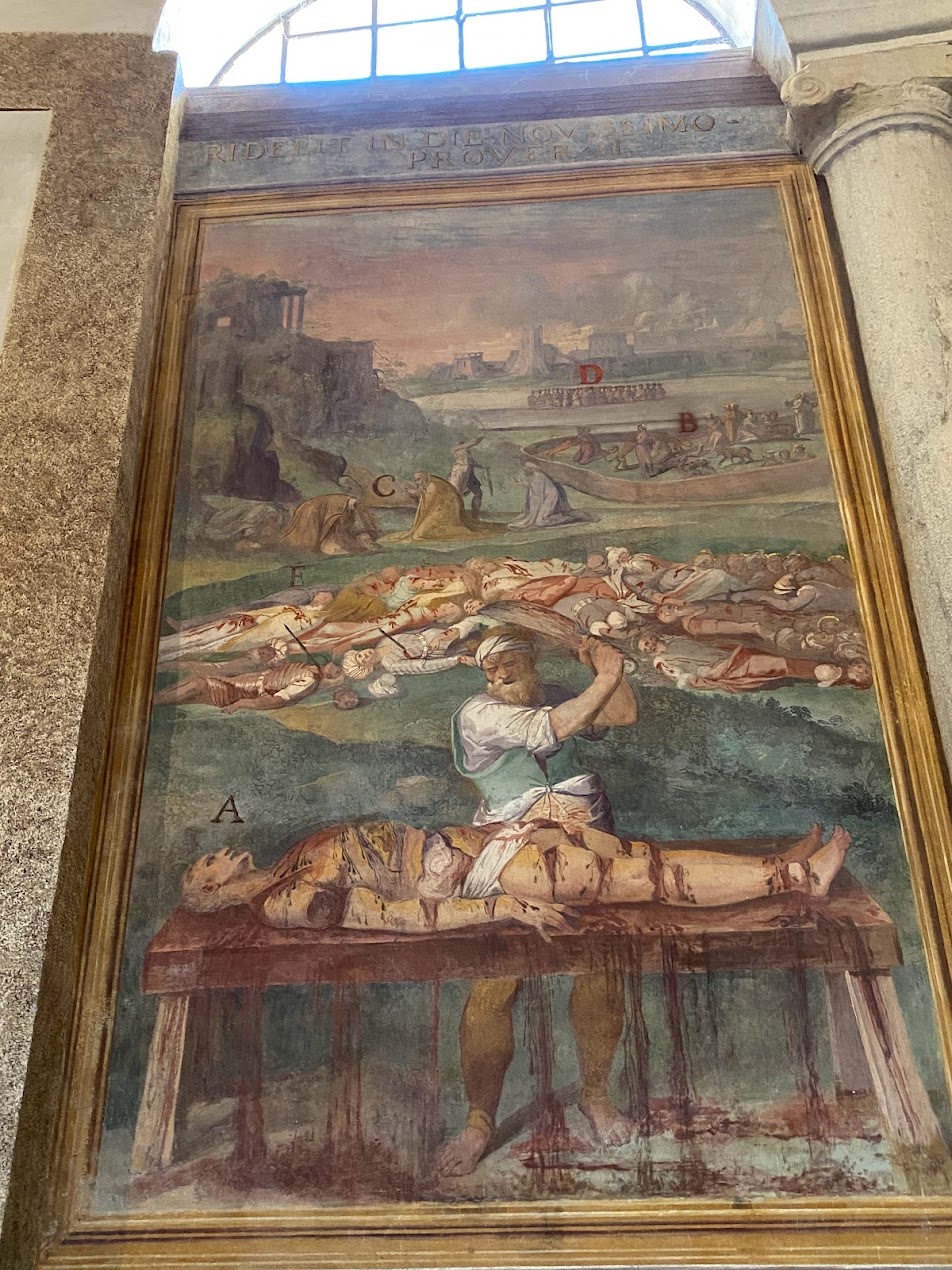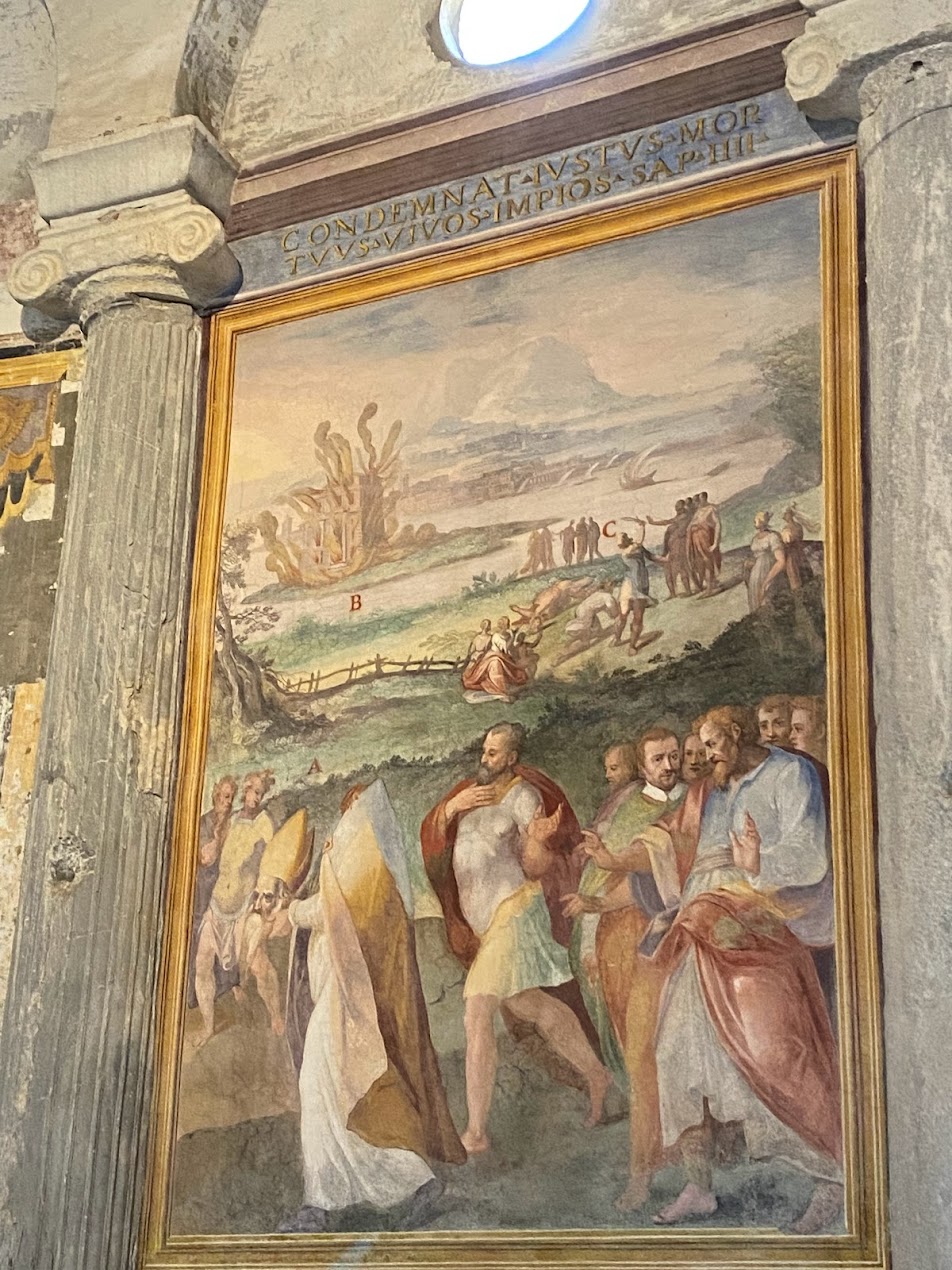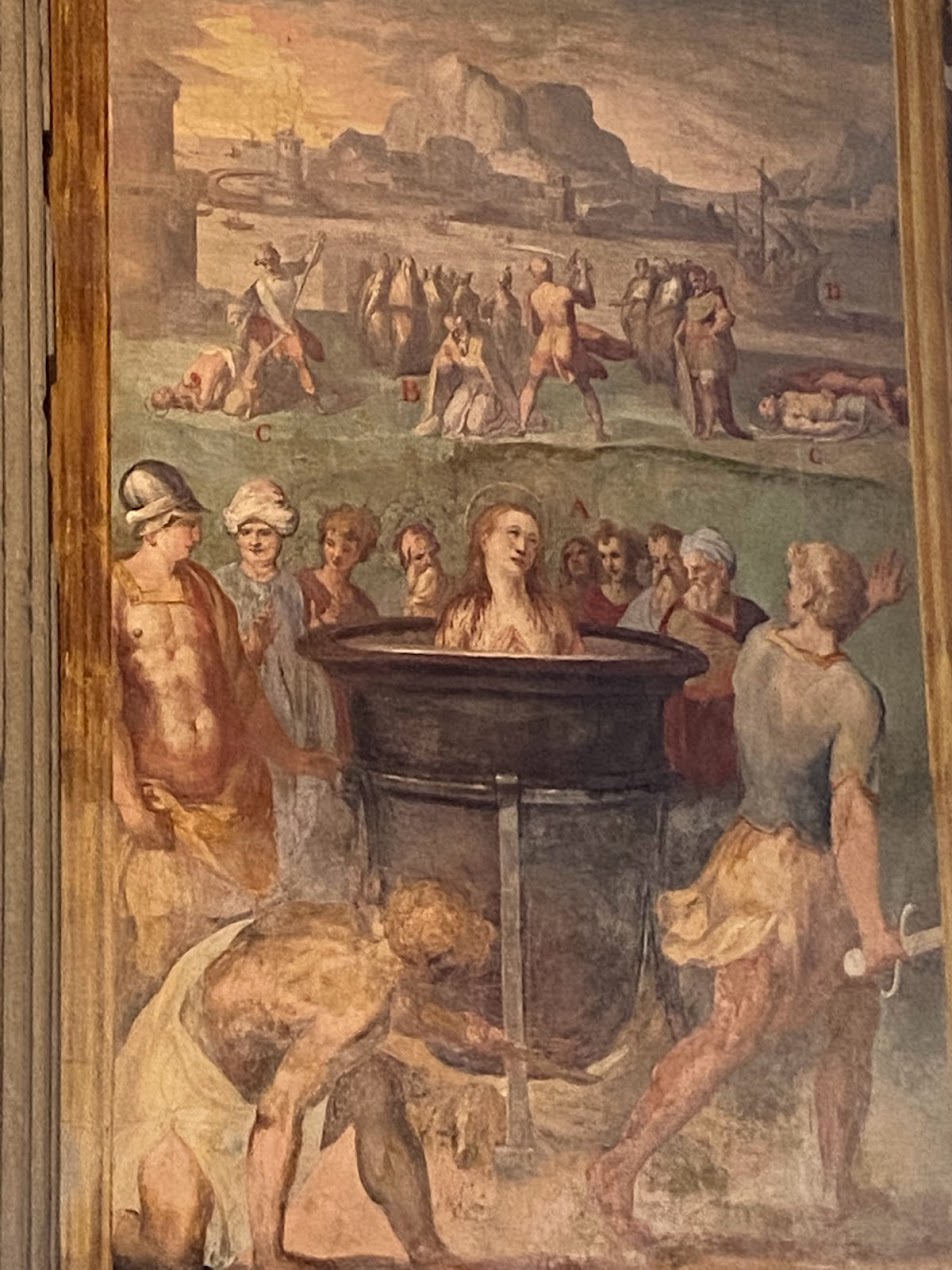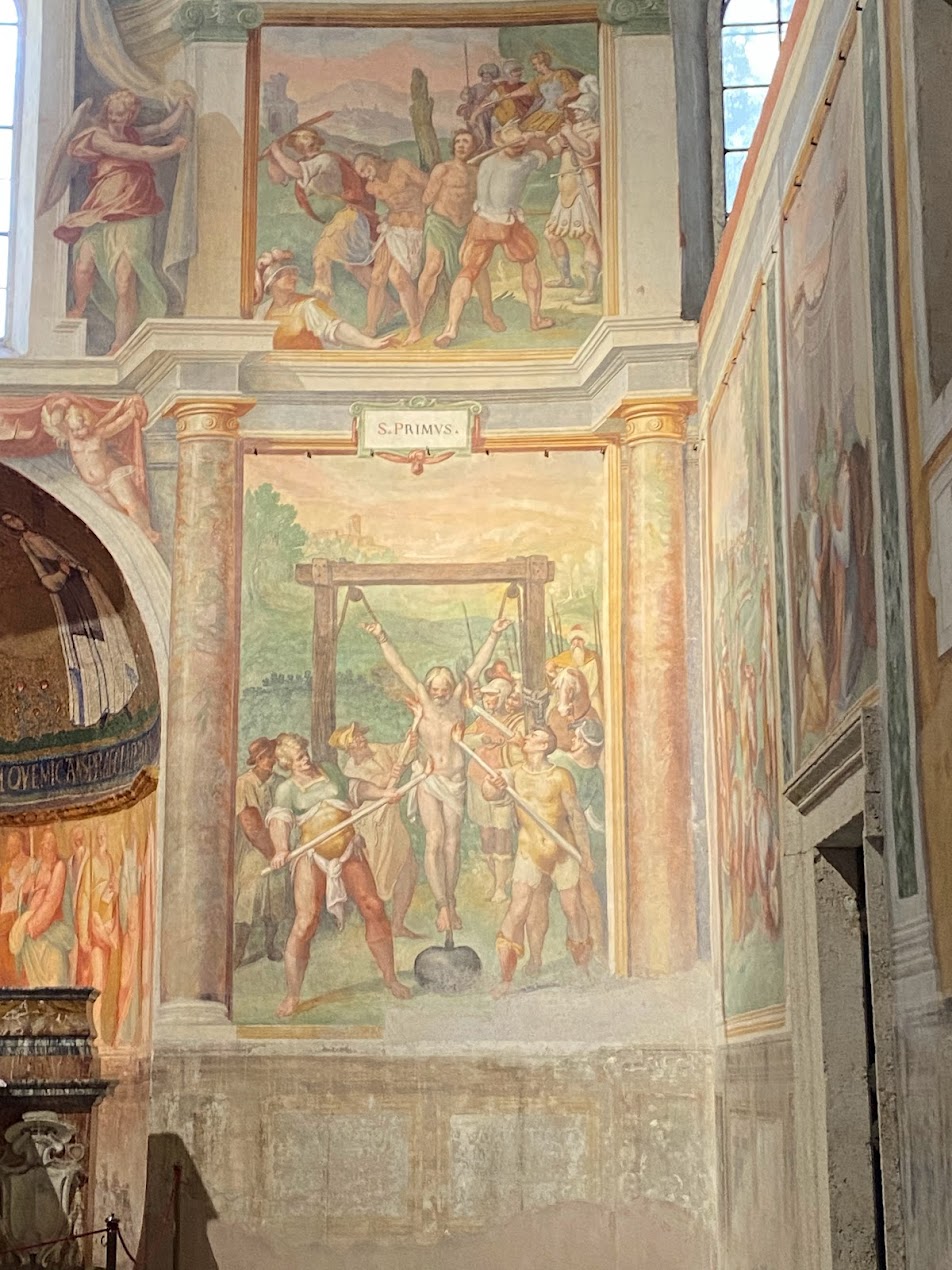
Santo Stefano Rotondo, off the beaten path in Rome
In modern culture, horror movies set the standard for inciting fear in viewers. A pounding heartbeat, clammy palms, and the tendency to shriek aloud are all symptoms of a good old-fashioned Halloween horror film-fest. Incredibly, art can evoke the same – or even greater – psychological and mental responses in its viewers. This phenomenon is known as Stendhal Syndrome, named after a 19th century author who visited the Basilica of Santa Croce in Florence in 1817. Upon visiting the cultural site for the first time, he experienced an intense physical response to the artwork, writing, “I had palpitations of the heart, what in Berlin they call ‘nerves’. Life was drained from me. I walked with the fear of falling.” If Stendhal had been a woman, he may have swooned and required a swift dose of smelling salts to revive.
While Stendhal’s response was ultimately a positive one, Stendhal Syndrome has a dark side – it is known to provoke negative sensations in the viewer. The symptoms evoked by such artwork can range from physical responses, such as a quickened heartbeat or episodes of fainting, to mental disillusionment and even psychosis.

Gory frescoes covering the walls of the church
In fact, famed writer Charles Dickens found himself experiencing this overwhelming emotion when he visited Santo Stefano Rotondo in Rome. What Dickens encountered, which modern tourists can see as well, were gory frescoes depicting the macabre martyrdom of early Christian saints decorating the walls. These 16th century frescoes by Niccolo Circignani are not for the faint of heart: Roman martyrs are shown being flayed, boiled, vivisected, roasted, crucified and burned alive. When Dickens saw them for the first time, had he extreme discomfort. In his writings, he described the art as “a panorama of horror and butchery no man could imagine in his sleep,” likening his incredulity at the suffering as that of “poor old Duncan, in Lady MacBeth, when she marveled at his having so much blood in him.”
High praise indeed from a man who was known for his way with words. Dickens’ astonishment is matched by the reported reaction of another famous viewer, Pope Sixtus V. He visited the church shortly after the frescos’ initial debut. The Pope, it seems, burst into tears at the beauty represented by the faith of the butchered saints, and could not refrain from weeping.

One of the church’s bloody paintings
What makes these frescoes so memorable – and perhaps likely to cause nightmares for some viewers – is that they are impossibly distressing and even revolting. Not everyone has the stomach to face these depictions. While Circignani’s work speaks to a superior level of artistic mastery, it may be too intense for those uninitiated in the gory martyrdoms of the Catholic faith. Early Christian martyrs met their demise in shockingly disturbing ways, some so gruesome that they are almost unimaginable for modern sensibilities. At Santo Stefano Rotondo, Circignani has imagined these saints’ horrific ends for us, and painted them on the walls for all the world to see. For example, he displayed the torture of Saint Artemius, whose body was squashed between two slabs of stone. Circignani provided exquisite detail for an immersive experience in the saint’s painful final moments. He paints his eyes popping out of his sockets and fecal matter being expelled from his figure. Circignani further embraces the gore in his portrayal of Saint Agatha, whose breasts are in the process of being separated from her body with giant pincers. This Renaissance version of a haunted house – a house of body horrors – keeps intensifying with each depiction: a man on a butcher’s block being hacked apart with a machete, a forest full of amputated limbs dangling from tree branches, a saint carrying his own severed head, intestines bursting from abdomens, and more.
 The purpose behind these macabre depictions of extreme torture and unfailing faithfulness in God in the face of persecution finds its origins in the battle between Catholics and Protestants to claim the true heirship of Christianity in the late 1500s. Catholics and Protestants during that time were no strangers to persecution, and the frescoes were meant to incite grit and perseverance in early Jesuit novices entering Santo Stefano, as well as in other faithful Catholics praying in the Church. In some ways, to the novices and other Catholics of the time, the frescoes served the same cultural purpose as athletes on Wheaties do today. The power of the image to evoke courage, heart, and perseverance in the face of difficulty is not new – but the subjects depicted and the artistic tactics used to emphasize such qualities in the viewer have certainly shifted.
The purpose behind these macabre depictions of extreme torture and unfailing faithfulness in God in the face of persecution finds its origins in the battle between Catholics and Protestants to claim the true heirship of Christianity in the late 1500s. Catholics and Protestants during that time were no strangers to persecution, and the frescoes were meant to incite grit and perseverance in early Jesuit novices entering Santo Stefano, as well as in other faithful Catholics praying in the Church. In some ways, to the novices and other Catholics of the time, the frescoes served the same cultural purpose as athletes on Wheaties do today. The power of the image to evoke courage, heart, and perseverance in the face of difficulty is not new – but the subjects depicted and the artistic tactics used to emphasize such qualities in the viewer have certainly shifted.
 For the original patrons of Santo Stefano Rotondo in Rome, the goal of the frescoes was to shock viewers into a state of religious fervor. Now, they still serve to shock viewers, but may make them more nauseated than prepared to sacrifice life and limb for their faith in unbearably grotesque ways. The contrast between modern and historical reactions to the site emphasize how culture impacts a society’s acceptance – or rejection – of an artist’s work. Many modern viewers may instinctually turn away from the revolting nature of the frescos, when, in fact, Circignani’s intention was to draw the viewer in closer to the artwork as a path for a deeper relationship with God.
For the original patrons of Santo Stefano Rotondo in Rome, the goal of the frescoes was to shock viewers into a state of religious fervor. Now, they still serve to shock viewers, but may make them more nauseated than prepared to sacrifice life and limb for their faith in unbearably grotesque ways. The contrast between modern and historical reactions to the site emphasize how culture impacts a society’s acceptance – or rejection – of an artist’s work. Many modern viewers may instinctually turn away from the revolting nature of the frescos, when, in fact, Circignani’s intention was to draw the viewer in closer to the artwork as a path for a deeper relationship with God.
Santo Stefano Rotondo is a fantastic example of how the cultural perception of what is “art” and what is “disgusting” can change, depending on the cultural, societal, and political conditions at play for both the artist and the viewer. The full impact of the church is missed if one fails to recognize the full historical narrative of the site, in order to understand the depth of the cultural heritage on shockingly open display. If all else fails, one can at least appreciate Circignani’s macabre creativity in showing us the many shades of death and torture.

The rights in all the photos in this post belong to Leila A. Amineddoleh